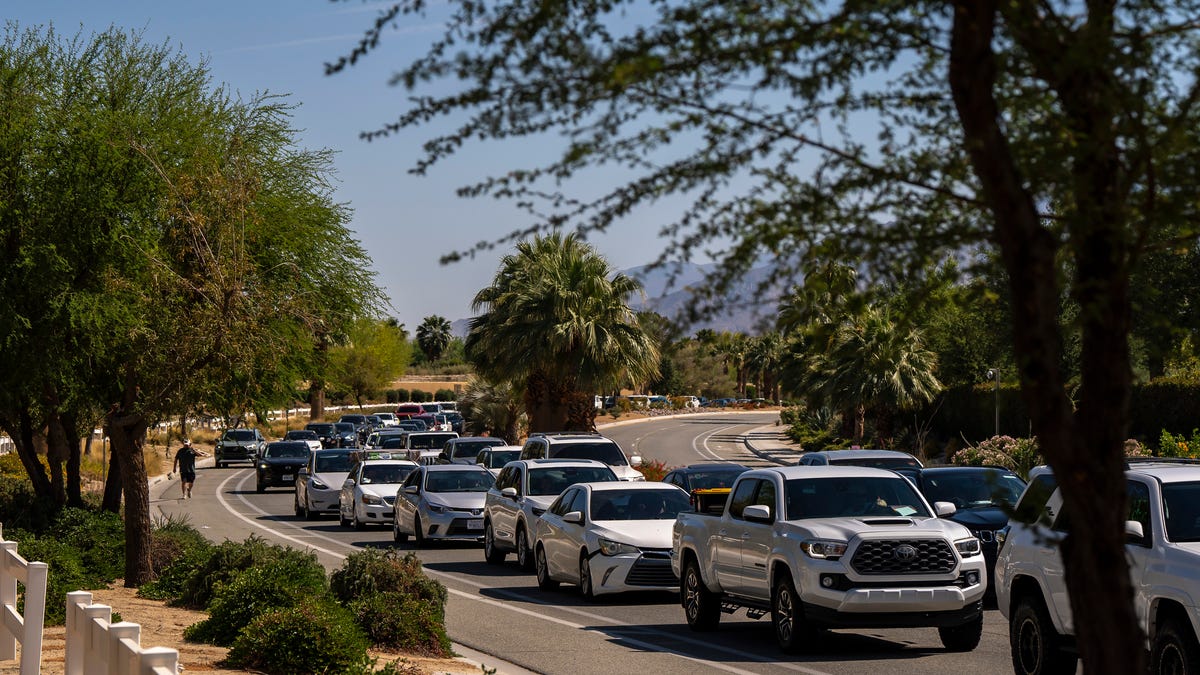Coachella Traffic Chaos: Organizers Apologize, Vow Improvements
Coachella Valley Music and Arts Festival, renowned for its star-studded lineup and vibrant atmosphere, recently faced significant backlash due to severe traffic congestion. Thousands of attendees experienced hours-long delays entering and exiting the festival grounds, leading to widespread frustration and criticism. In response, organizers have issued a public apology and pledged significant improvements for future events. This article delves into the causes of the chaos, the organizers' response, and what attendees can expect in the years to come.
The Roots of the Gridlock: Why Coachella Traffic Became a Nightmare
The 2024 Coachella traffic problems weren't a singular event; they stemmed from a confluence of factors:
- Increased Attendance: Coachella's popularity continues to soar, attracting a record number of attendees each year. This surge in numbers naturally strains infrastructure designed for a smaller crowd.
- Inadequate Infrastructure: The roads leading to and from the Empire Polo Club, the festival's location, are notoriously inadequate for handling such a massive influx of vehicles. Limited entry points and narrow roads exacerbate the problem.
- Ride-Sharing Congestion: The reliance on ride-sharing services like Uber and Lyft contributed to the congestion. The sheer volume of pick-ups and drop-offs overwhelmed the already strained transportation system.
- Poor Wayfinding & Communication: Many attendees reported difficulties navigating to the festival grounds due to poor signage and a lack of clear communication from organizers regarding traffic management strategies.
- Unforeseen Circumstances: While not always predictable, unexpected events like accidents or breakdowns can significantly compound existing traffic problems, creating ripple effects that clog the entire system.
"The wait was excruciating," one attendee shared on social media, echoing the sentiments of many frustrated festival-goers who missed sets and endured uncomfortable conditions.
Organizers Respond: Apologies and Promises of Change
Facing a wave of negative feedback, Coachella organizers issued a formal apology acknowledging the significant inconvenience caused by the traffic situation. They committed to implementing several key improvements to prevent a recurrence:
- Enhanced Transportation Planning: Organizers promised a more comprehensive transportation plan for future events, possibly including expanding shuttle services, improving traffic flow management, and exploring alternative transportation options.
- Improved Wayfinding & Communication: Clearer signage, better use of real-time traffic data, and improved communication through various channels (app updates, social media, etc.) are crucial components of the proposed changes.
- Collaboration with Local Authorities: Working closely with Riverside County officials is paramount to securing necessary infrastructure improvements and implementing coordinated traffic management strategies.
- Staggered Arrival Times: Exploring options to encourage staggered arrival times through timed entry tickets or other incentives could help alleviate congestion at peak hours.
These improvements are not just promises; they are a necessity for maintaining the festival's reputation and ensuring the safety and enjoyment of future attendees.
What Attendees Can Expect: Preparing for Future Coachella Experiences
While organizers are working hard to address the issues, attendees can also play a proactive role in mitigating future traffic problems:
- Utilize Public Transportation: Consider using public transportation options, such as shuttle buses, if available.
- Carpool: Reducing the number of vehicles on the road through carpooling can significantly ease congestion.
- Arrive Early: Plan to arrive well in advance of the scheduled show times to account for potential delays.
- Check the App & Social Media: Stay updated on traffic conditions and any official announcements through the Coachella app and social media channels.
- Have a Backup Plan: Prepare for potential delays by having alternative plans in place, including provisions for food and water.
"The experience shouldn't be marred by hours of waiting in standstill traffic," stated another attendee, highlighting the need for proactive solutions.
Conclusion: Learning from the Chaos
The Coachella traffic crisis serves as a valuable lesson for large-scale event organizers. Addressing infrastructure limitations, improving communication, and actively engaging with attendees are crucial elements in ensuring a positive and enjoyable experience for everyone. The organizers’ commitment to making changes offers a glimmer of hope for future Coachella events, but only consistent implementation and collaboration will truly alleviate the traffic chaos that overshadowed the 2024 festival. The future success of Coachella will hinge on its ability to learn from past mistakes and deliver on its promises of improvement.
